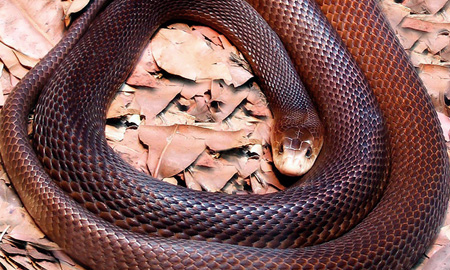Introduction
When it pertains to venomous snakes, Australia is home to some of one of the most interesting and harmful varieties on the planet. Among these, the Tiger Snake stands apart not only for its powerful venom however likewise for its appealing habits. Understanding the behavior of poisonous serpents like the Tiger Serpent is crucial for both wild animals lovers and those staying in areas where these serpents exist. This article explores different elements of Tiger Snake actions, environment, identification, safety measures, and emergency treatment practices in instance of a snake bite.
Understanding the Actions of Venomous Snakes Like the Tiger Snake
The Tiger Snake, medically referred to as Notechis scutatus, is well-known for its aggressive nature when intimidated. These serpents exhibit a variety of actions that can be rather various from their non-venomous equivalents.
Characteristics of Tiger Snakes
The Tiger Serpent is quickly identifiable because of its distinct bands or red stripes that appear like a tiger's markings. They can differ in shade from yellowish-brown to dark olive or black. This pigmentation offers not only as camouflage but additionally as a warning signal to potential predators.
Adaptability to Environment
One remarkable facet of their behavior is their adaptability to various settings. Located mainly in seaside areas, marshes, and wetlands across Australia and Tasmania, they can grow in diverse habitats consisting of city locations.
Hunting Techniques
Tiger Serpents are ambush predators primarily preying on fish, frogs, and small animals. They possess eager sight and a severe feeling of smell which aids them in situating prey effectively.
Venom Composition
Their venom consists of neurotoxins that impact the nerves, resulting in paralysis or fatality in smaller sized animals. For people, prompt clinical focus is important after a tiger serpent bite because of its possibly dangerous effects.
Natural Environment of Tiger Snakes
Preferred Locations
Understanding where these serpents reside sheds light on their behavior patterns. The tiger serpent habitat consists of:
- Coastal regions Swamps Grasslands Urban areas with bountiful water sources
Seasonal Movements
During warmer months, Tiger Snakes are much more energetic as they bask in sunshine or hunt for food. On the other hand, cooler months see them pulling back right into hibernation sites.
Are Tiger Snakes Venomous?
Yes! The inquiry "are tiger serpents venomous?" typically emerges among those unfamiliar with this species. Their poison is Helpful hints considered one of the most dangerous among all snake varieties worldwide.
Symptoms of a Tiger Snake Bite
Go to this siteIf bitten by a tiger serpent, signs and symptoms might include:
- Localized pain Swelling at the bite site Nausea and vomiting Sweating and confusion
Immediate medical aid is critical as without treatment attacks can cause serious health and wellness difficulties or even death.
First Aid for Serpent Bites: Quick Action Guide
Knowing how to administer emergency treatment for a snake bite can conserve somebody's life. Below's what you should do:
Step 1: Stay Calm
Keeping calmness aids reduce heart rate which reduces venom spread.
Step 2: Paralyze the Affected Area
Keep the affected limb still and below heart degree if possible.
Step 3: Call Emergency Services
Always look for specialist medical help quickly after a snake bite.
First Help for Snake Bite Package Essentials
A well-equipped snake bite emergency treatment kit ought to consist of:
- A compression bandage Antiseptic wipes A set of scissors A cold pack
Safety Safety measures: Stopping Snake Bites in Australia
Awareness Programs
Educating areas about local snake types and their behaviors can substantially minimize experiences leading to bites.
Avoiding Unsafe Areas
Staying away from long lawn during warmer months decreases contact with snakes that get more info could be relaxing or hunting.

Common Misconceptions About Tiger Snakes
Many individuals think mistaken beliefs concerning the behaviors of tiger snakes bring about unneeded worry. Below are some information:

Myth 1: All Tigers Are Aggressive
Not all tiger snakes will certainly show aggressiveness if left uninterrupted; numerous choose leaving rather than confrontation.
Myth 2: They Chase Humans
Tiger serpents do not proactively chase human beings; they might strike when they really feel endangered however will usually pull away if offered space.
Conservation Initiatives Connected to Poisonous Snakes
Conservation efforts focus on educating communities about safeguarding regional wild animals while decreasing human-snake interactions.
Importance of Ecosystems
Understanding that venomous snakes play a crucial function in preserving eco-friendly equilibrium assists foster appreciation instead of anxiety towards them.

FAQs Regarding Tiger Snakes
What must I do if I come across a tiger snake?- Maintain range and slowly pull back without unexpected movements.
- While bites aren't exceptionally usual as a result of awareness initiatives, they still happen yearly within Australia.
- Baby tiger snakes can supply complete dosages of poison in spite of being smaller; for this reason caution is suggested around them.
- They mostly eat frogs, fish, tiny creatures like rodents, and various other reptiles.
- It's illegal in most jurisdictions without appropriate licensing as a result of safety and security worries regarding their venom.
- Wear tough boots and remain on marked routes; look before putting hands or feet right into concealed areas like rocks or logs.
Conclusion
Understanding the behavior of venomous serpents like the Tiger Serpent not just boosts our expertise however likewise promotes security understanding among those living near their habitats. From identifying their features, recognizing first aid methods adhering to a bite, with engaging preservation initiatives-- every aspect plays a crucial function in fostering coexistence with these remarkable reptiles while appreciating their area within our ecosystem.
As we deepen our understanding via education and learning and experience, we add positively toward ensuring both human safety and security and wildlife conservation-- benefitting all parties involved!